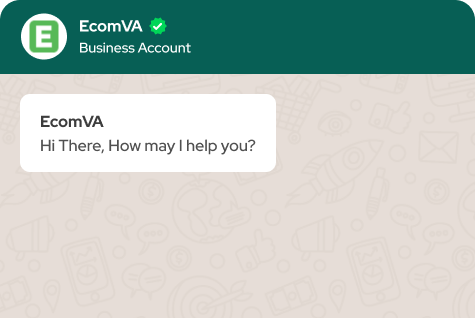How long our Product Descriptions can be
In the fast-paced world of e-commerce, product descriptions are your silent salespeople. They convince window shoppers to click “add to cart,” answer lingering questions, and ultimately, seal the deal. But how much information is too much? How long should your product descriptions be?
There’s no one-size-fits-all answer. The ideal length of a product description depends on several factors, including your product type, target audience, and overall brand voice.
This wiki will equip you with the knowledge and strategies to craft compelling product descriptions that are informative, engaging, and optimized for conversion, regardless of word count. But first:
Why Do Product Descriptions Matter?
Who likes walking into a store and being greeted by blank shelves? No labels, no descriptions, just…stuff. Frustrating, right? That’s essentially what happens when online shoppers encounter products with thin or nonexistent descriptions. They’re left guessing about features, benefits, and why they should care.
Effective product descriptions bridge that information gap. They:
- Inform: Clearly explain your product’s features, materials, dimensions, and functionalities.
- Educate: Emphasize how your product solves problems or fulfills needs.
- Engage: Use persuasive language and storytelling to capture attention and create a desire.
- Convert: Convince shoppers that your product is the best choice and nudge them towards a purchase.
- Boost SEO: Descriptive content rich in relevant terms helps search engines understand your product and improve your ranking.
In a nutshell, product descriptions are a cornerstone of thriving e-commerce operations. They directly impact customer experience, conversion rates, and ultimately, your bottom line.
Who Are You Talking To?
Before diving into word count, consider your target audience. Who are you willing to reach with your services or products? What are their needs, pain points, and buying habits?
- Tech-savvy millennials might appreciate concise descriptions with bullet points and key features.
- Detail-oriented baby boomers might prefer more in-depth explanations, including specifications and detailed use cases.
Knowing your audience allows you to tailor your descriptions for maximum impact.
How long should your product descriptions be?
Different lengths and their applications
Short & Sweet (Under 100 Words)
Ideal for simple products with readily understood features (think phone cases or basic t-shirts). Bullet points can effectively convey key specifications.
Informative & Engaging (100-300 Words)
Perfect for most products. This range allows you to elaborate on features, and benefits, and address common customer questions. Use clear language, and concise sentences, and sprinkle in persuasive language to keep readers hooked.
In-Depth Exploration (300+ Words)
Best suited for complex products with intricate features or those targeting a highly specific audience (think professional photography equipment or high-end furniture). Dive deep into technical specifications, provide detailed use cases, and consider including user manuals or assembly instructions.
How to Balance Length and Value?
- Prioritize: Identify the most important information for your target audience and prioritize it within the description. This is also applicable when determining product title length.
- Scannability is King: Use bullet points, subheadings, and bold text to break up content and aid quick information retrieval.
- Visuals Speak Louder: Complement your descriptions with high-quality product images and videos that showcase features and functionality.
Instead of going into the hassle of learning to write compelling product descriptions, you can hire an e-commerce virtual assistant.
Additional tips for making your product descriptions stand out
Mobile Friendly SEO
With the majority of online shopping happening on mobile devices, ensure your descriptions are optimized for smaller screens and mobile friendly SEO. Use short sentences, avoid jargon, and consider a “foldable” format that reveals additional details with a click.
Brand Voice
Maintain your brand’s unique voice and tone throughout your descriptions. Are you playful and informal? Professional and authoritative? A consistent voice strengthens trust and recognition.
Calls to Action
Don’t be shy! End your descriptions with a clear call to action, whether it’s “Add to Cart,” “Learn More,” or “Shop Now.”
Bonus Tip: Consider A/B testing different description lengths and formats to see what resonates best with your audience.
Advanced Techniques for Compelling Product Descriptions
Storytelling
People connect with stories. Weave a narrative around your product. How will it improve someone’s life? Will it help them achieve a goal or overcome a challenge? Craft a compelling story that showcases your product’s value in a relatable way.
Benefit-Oriented Language
People don’t just buy products, they buy solutions. Concentrate on the benefits of your product, not just its features. Instead of stating “This blender has 3-speed settings,” explain how those settings empower users to “create perfectly smooth smoothies or crush ice for frozen cocktails.”
Overcome Objections
Anticipate potential customer concerns and address them head-on within your descriptions. Is battery life a worry for your wireless headphones? Highlight the extended playtime or mention the included charging case.
Sensory Details
Engage the reader’s senses. Describe the soft feel of a cashmere sweater, the crisp sound quality of headphones, or the invigorating scent of a new candle. Vivid descriptions transport readers and create a more immersive experience.
Highlight Uniqueness
What sets your product apart from the competition? Do you use sustainable materials? Offer a lifetime warranty? Emphasize these unique selling points (USPs) to grab attention and encourage purchase.
Power Up with SEO
While not the sole focus, consider search engine optimization (SEO) best practices. Research relevant keywords that potential customers might use to find your products, and integrate them naturally within your descriptions. However, prioritize readability over keyword stuffing.




